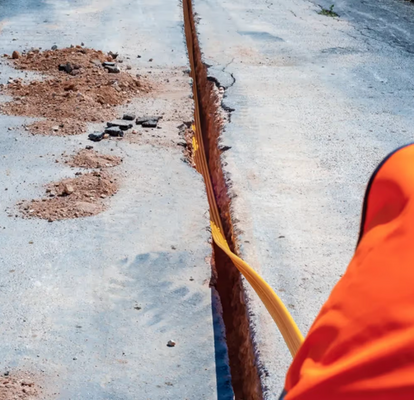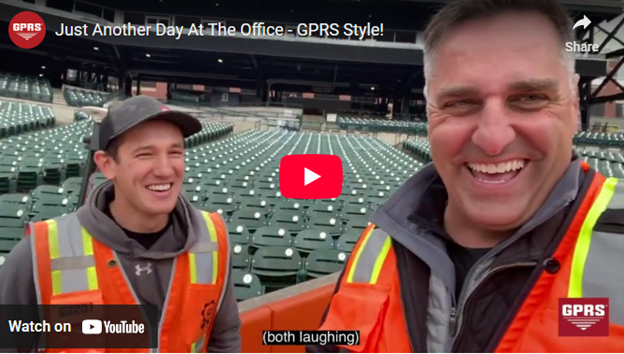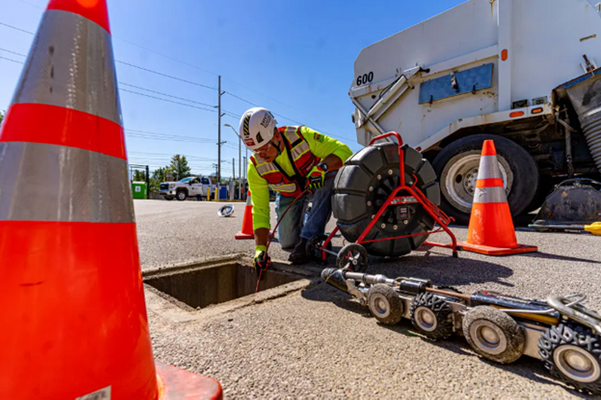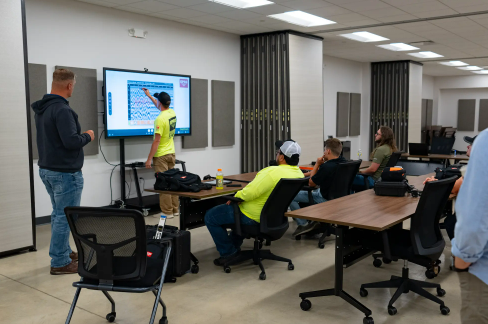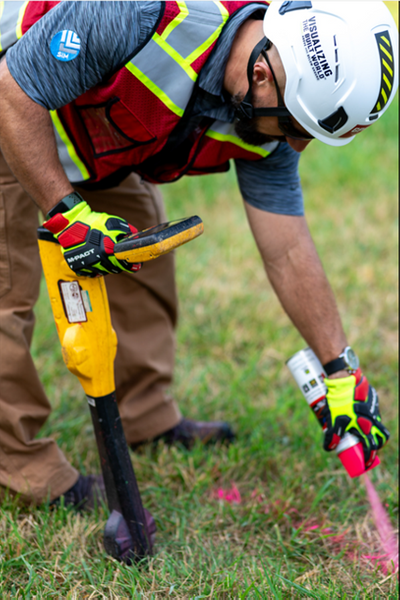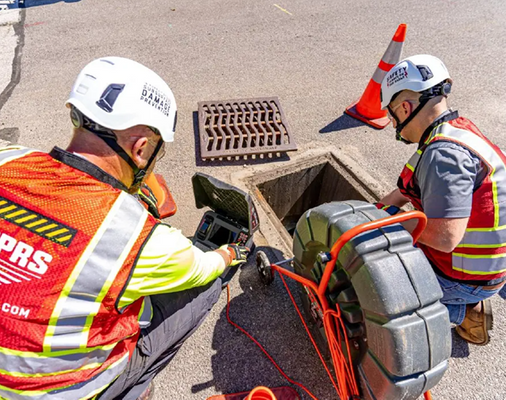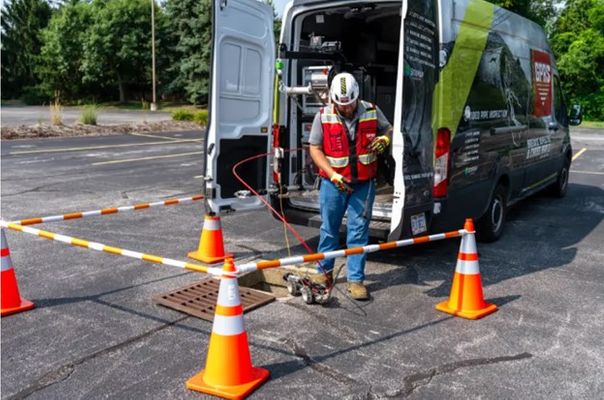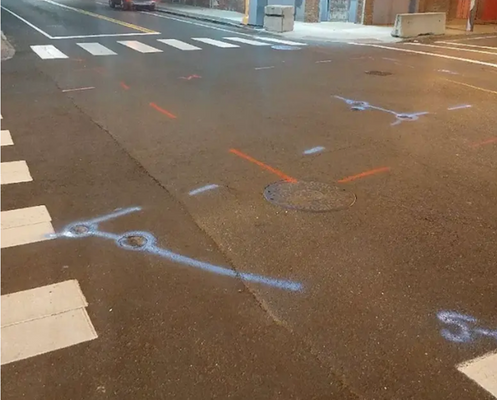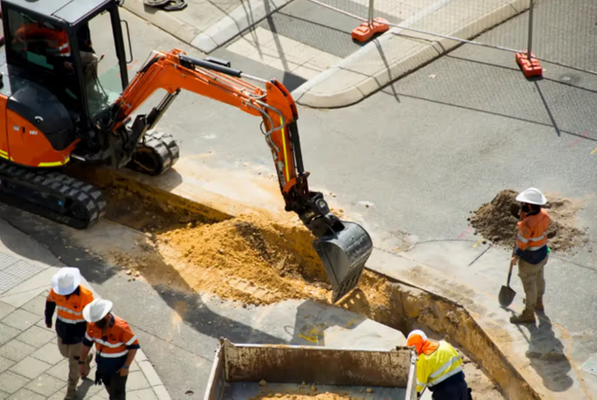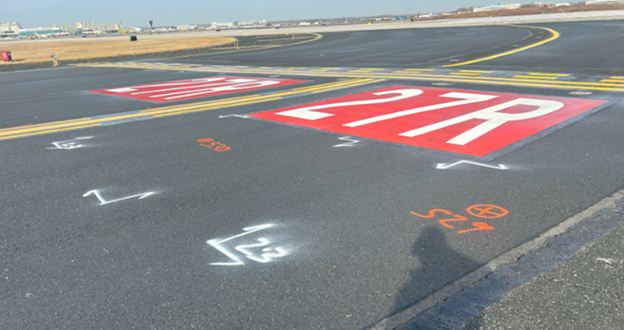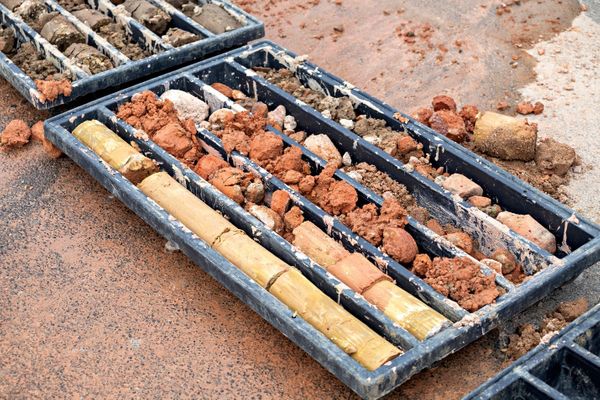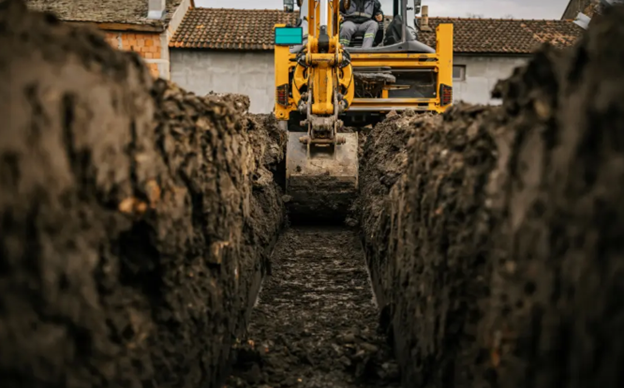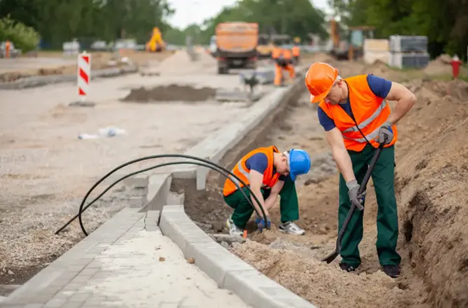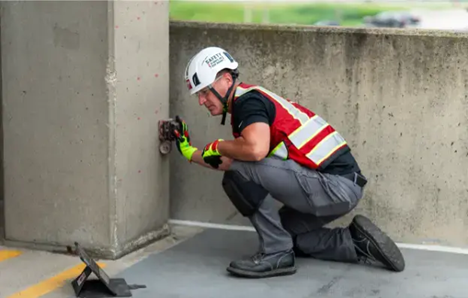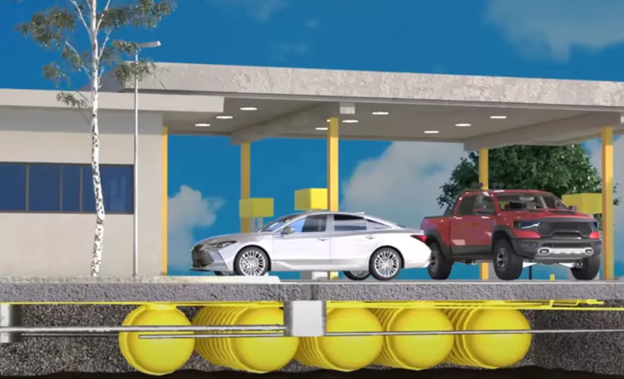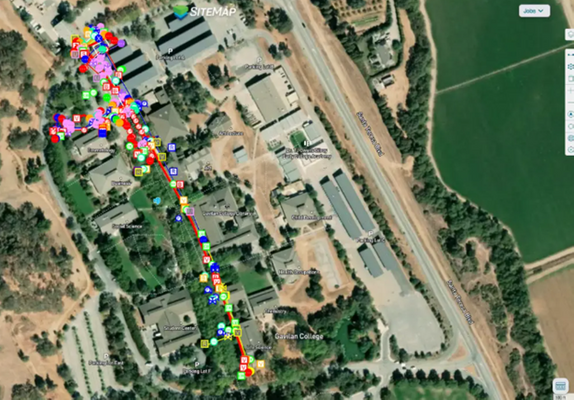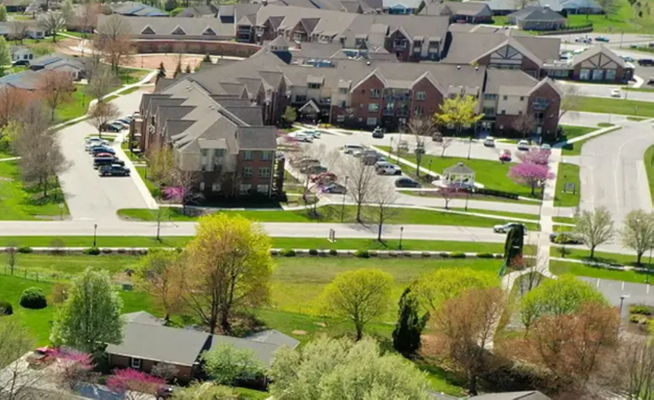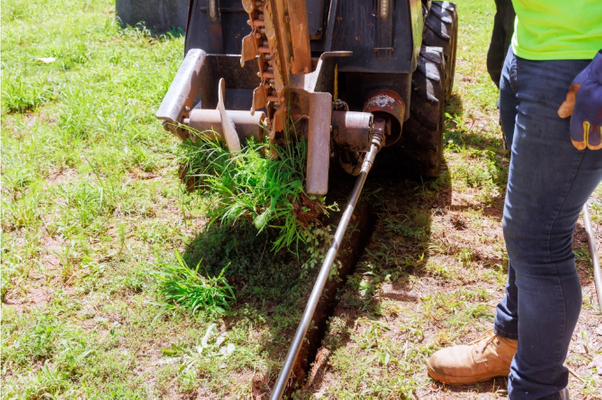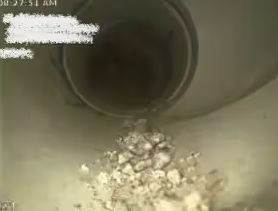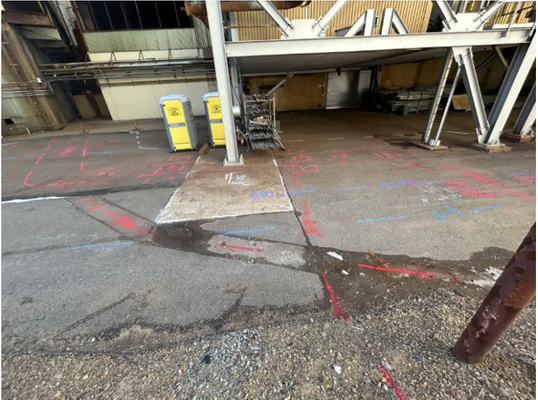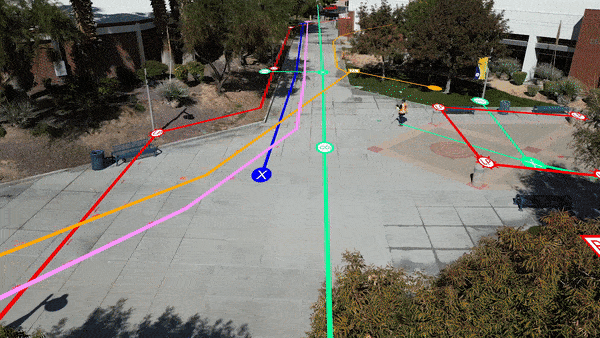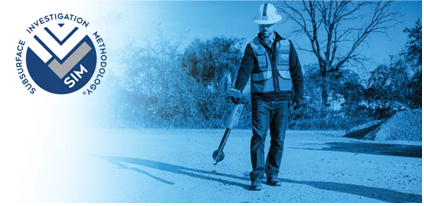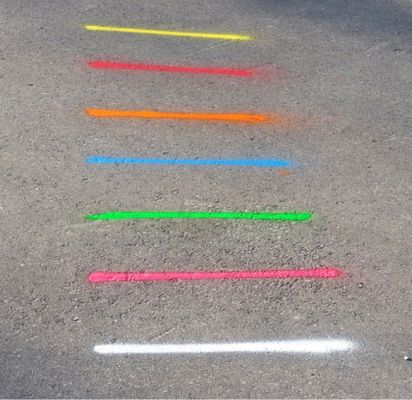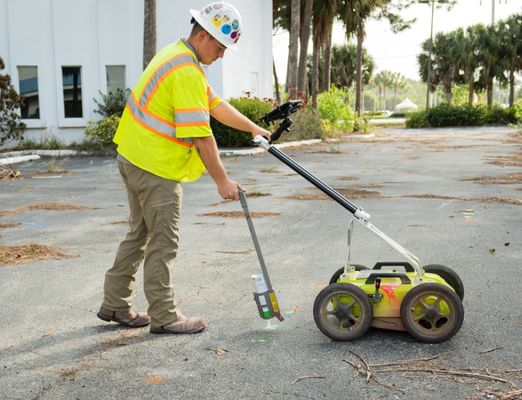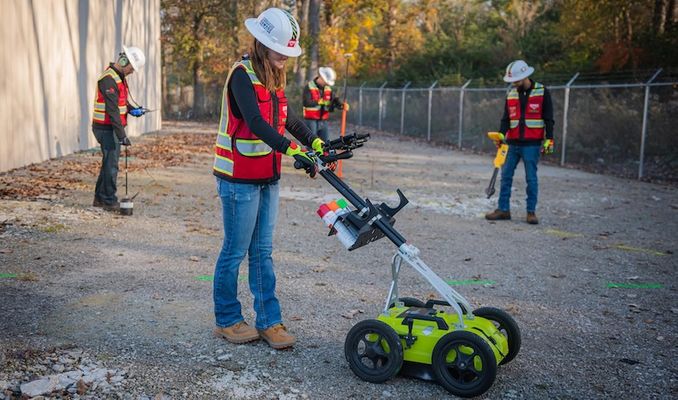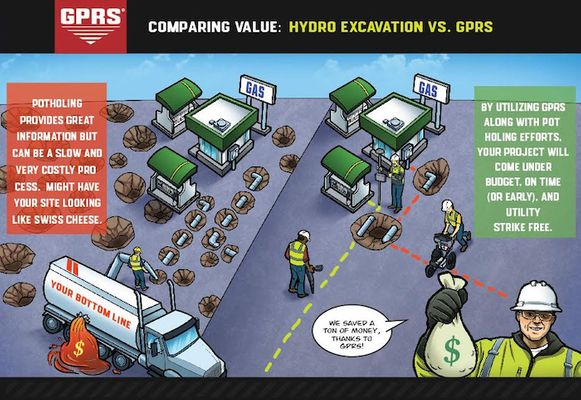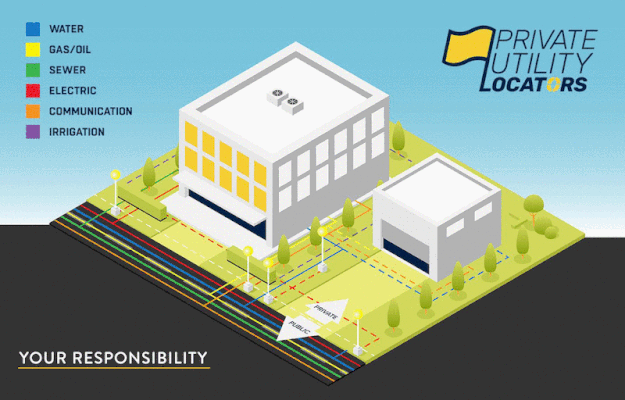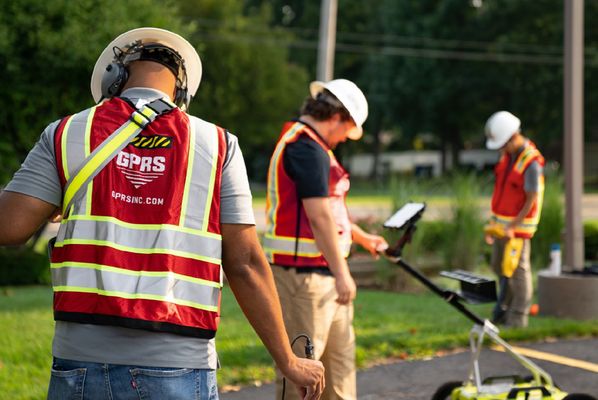Articles
How GPRS Pinpoints Pressurized Domestic Water Line & Fire Loop Leaks
Commercial properties need significant water and wastewater infrastructure to function, so non-destructive commercial leak detection helps avoid the extra costs of water loss.
GPRS Supports Safe EV Charger Installation for Ohio Service Station
For general contractors, it’s not just about EV charging installation compliance; it’s about safety, efficiency, and protecting your bottom line.
Unlocking Subsurface Clarity: How GPRS’ SiteMap Sewer Layer Helps Facilities Managers Locate and Assess Underground Pipes
Relying on incomplete as-builts, potholing blindly, and spending time and money trying to identify the source of a blockage or overflow, leaves Facility & Project Managers without a clear picture of where their pipes, cleanouts, and laterals are located.
Should You Rent, Buy, or Hire a GPR Service?
GPR can prevent costly mistakes and keep projects on schedule. Should you rent GPR equipment, purchase your own system, or hire a professional service?
GPRS Reality Capture Services Accelerate Hydroelectric Dam Renovation
Because no accurate documentation of the buildings existed, the team needed a complete picture of the interior layout. Every pipe, transformer, and structural element had to be mapped to guide the renovation process.
GPRS Helps Discover the Cause of Persistent Pavement Failures at Denver’s Mile High Complex
25 year-old satellite data and Subsurface Investigation Methodology helped Mile High & Empower Field facilities managers to get to the bottom of a persistent and expensive problem.
What’s Changed in the American Concrete Institute 318 Code Update?
ACI’s “flagship” concrete building codes are updated with sustainability, seismic, shear friction, deep foundation, and performance-based wind design guidance.
GPR use in Environmental Groundwater Monitoring & Contaminant Detection
Whether for compliance monitoring or property transactions, Phase 1 and Phase 2 Environmental Site Assessments demand accurate subsurface utility maps.
GPRS Scans 175-Year-Old Church to Detect Cornerstone Artifacts
“We found something in the middle of the stone… Then we got closer to the edge. It was right on the corner… We scanned adjacent stones to rule out artifacts or false signals, and found no similar readings.”
How Simplified Underground Utility Mapping Helps Create Permanent Digital Utility Record
Utility information often exists in temporary spray-painted mark-outs, old as-builts scattered across various filing cabinets, or in the memories of aging employees.
Key Safety Ally Discusses Shared Job Site Goals in GPRS’ Safety Tour of America
Environmental Health & Safety Manager, Sixtus Aliuriagwu, discussed DPR’s commitment to “zero incidents” on their jobsites and how GPRS is a key partner in their endeavor.
How Much Does It Cost to Rent or Buy Utility Locating Equipment?
A typical GPR setup includes a wheeled cart, radar transmitter and receiver, battery, and a digital interface, often a tablet.
Explaining Microtrenching: A Modern Approach to Installing Subsurface Utilities
Some utilities require deeper installation to meet safety or regulatory standards, but for others, microtrenching may be a valuable solution.
Why You Need to Locate Private Underground Utility Lines
Over 60% of buried utility infrastructure is privately owned and managed by individuals, corporations, institutions, or municipalities.
GPRS scans concrete two miles below the surface
While the GPR technology we use has evolved since 2015, William Johnson’s harrowing story remains a testament to the work ethic of our field team.
Notes From the Field: My “Real Fun” Day at Comerica Park
Utility locates like Parker's are the unsung foundation of the game. The stadium lights, the massive jumbotron, even the pristine field itself? None of it functions without the unseen network beneath—the conduits, irrigation systems, and electrical lines powering the entire operation.
Rent vs. Buy vs. Hire a Sewer Scope Service Provider: Video Pipe Inspection
Utilizing high-definition video cameras mounted on remote-controlled robotic crawlers, lateral launch robots, or push cameras, VPI technology enables inspectors to detect cracks, blockages, and system failures within sewer, water, and lateral lines.
The Intelligent Art of Locating Field Insights into Subsurface Investigation Methodology
What appears chaotic at first is in fact a finely tuned practice rooted in precision and methodology.
The Evolution of Electromagnetic Utility Scanning
Discovered in 1831, today’s sophisticated electromagnetic induction locators are far more advanced and accurate in helping locate underground utilities.
How NASSCO-Certified GPRS Video Pipe Inspections Protect Water & Wastewater Systems from the Hidden Threat of Cross Bores
The most common cross bores are in sanitary and storm sewer lines, but they can also occur in water mains, electrical conduits, and the most dangerous version – gas line incursions.
How Drainage Surveys Work: A Technical Guide for Municipal and Facility Managers
Routine inspections help detect early-stage issues before they escalate into backups, surface flooding, or infrastructure failures.
GPRS Utility Mapping Enables Safe Power Line Installation Across 5.4-Mile Roadway Corridor
Two Project Managers led round-the-clock operations, overcoming heavy traffic conditions and a dense utility matrix to accurately locate and map underground utilities over a 5.4-mile stretch of urban roadway so that new power lines could be installed.
CGA Issues Targeted Recommendations to Help General Contractors Prevent Utility Strikes
The report introduces a new industry tool for tracking excavation safety progress and details actionable steps contractors and other stakeholders can take to mitigate subsurface damage risks. It supports CGA’s 50-in-5 Challenge, an initiative to reduce utility damages by 50% over five years.
GPRS Ensures Safe Execution of 128 Soil Borings at Philadelphia International Airport
The airport’s nonstop operations required performing scans in high-traffic taxiway zones and introduced logistical challenges.
Why Recognized Environmental Conditions (RECs) Are a Crucial Component of Environmental Due Diligence
Updates to ASTM standards underscore the need for comprehensive environmental due diligence, ensuring assessments align with contemporary risk management strategies.
What to Expect When You Order an Underground Utility Locating Survey
Here’s what AEC professionals should expect when they hire a local utility locating company near them to conduct a subsurface utility assessment, based on GPRS’ processes.
Advanced Leak Detection Strategies for Buried Pressurized Water Lines and Fire Suppression Systems
The Critical Role of Leak Detection in Facility Management
Undetected leaks private or public pressurized water utilities or fire suppression systems can lead to significant financial losses, structural damage, and compliance violations for facilities managers. As infrastructure ages, the demand for precise and efficient leak detection methods will only increase.
Proactive Leak Detection in Fire Suppression Systems: Essential Strategies for Facilities Managers
Fire suppression systems are integral to a building’s safety, ensuring rapid response to fires and minimizing damage. However, these systems rely on consistent functionality, and leaks can compromise their effectiveness, leading to increased repair costs, regulatory non-compliance, and property damage.
Excavation Risks and the Critical Role of Accurate Subsurface Documentation
The consequences of excavating without verifying subsurface conditions are well-documented: costly utility strikes, project delays, service disruptions, injuries, and fatalities. Yet according to a national survey conducted by the Common Ground Alliance (CGA), 46% of Americans still plan to dig without contacting 811.
U.S. Infrastructure Trends Upward in ASCE’s Latest Report Card
The American Society of Civil Engineers gave the nation its highest grades to date for transportation, roadways, and wastewater management, among others.
How to Locate and Safely Cut Near Banded Post-Tension Cables?
Post-tension (PT) cables reinforce concrete structures, providing flexibility and strength that allow for taller, safer, and more efficient construction. When grouped into clusters of three to five cables, they are referred to as banded PT cables. These configurations significantly improve slab strength and are commonly used in elevator shafts, parking garages, transfer slabs, and beam-supported floors.
Explaining USTs and LUST sites
Leaking underground storage tanks pose significant risks to property owners. We explain how we find them and map them to help mitigate brownfield risk.
Accurate Subsurface Documentation at Gavilan College: How GPRS Utility Locating and SiteMap® Delivered Reliable Data Across 150 Acres
Maintaining and upgrading aging campus infrastructure demands precise, verifiable subsurface information. When Arizona Pipeline Co. initiated a water line installation project across Gavilan College’s 150-acre campus in Gilroy, California, the absence of reliable as-builts presented a critical risk to project timelines, budgets, and safety.
GPRS VPI Service Resolves Sewer Backup Issue for Nashville Restaurant
Push cameras and dye testing help find Nashville restaurant’s sewer problems
Initial inspections in the dishwasher room and parking garage showed no obstructions or anomalies, and multiple complementary methodologies were required.
GPRS Utility Locating Enables Efficient Collector Line Replacement at 1,200-Acre Texas Solar Farm
Connector lines – responsible for transmitting electricity from the site’s solar panels – required immediate replacement to restore the 1,200-acre solar complex to full operational capacity.
Utility Mapping Resolves Subsurface Infrastructure Deficiencies at Major Retirement Campus
A leading non-profit retirement community in Pennsylvania engaged GPRS to locate a suspected water line leak. The result: a comprehensive, field-verified utility map for the entire 334-acre campus.
Best Practices for Pre and Post-Installation for Directional Drilling Projects
Municipalities increasingly require pre and post-project CCTV inspections after horizontal directional drilling to detect cross bores and protect public safety.
GPRS Gives Critical Sewer & Structural Infrastructure Insights to a California Warehouse
GPRS Project Manager David Castro led a comprehensive infrastructure visualization effort that combined Video Pipe Inspection (VPI) and 3D laser scanning to deliver a complete understanding of the site conditions before any construction began.
GPRS Assists in Locating Leaking Utility Line at Massachusetts Power Plant
GPR and EM locating were used to successfully identify a buried utility tunnel and confirm a leak location that had been preliminarily detected via thermal imaging
GPRS Ensures Safe Utility Locating for California Trenching Project
Not all utilities are registered with 811, so additional private utility locating services were required to ensure drilling clearances before excavation.
Is It Worth The Cost To Map Your Underground Utilities?
Enhancing Safety & Budget Efficiency with the Right Technology
Best Practices for Subsurface Utility Investigations in Commercial Construction
The role of subsurface utility investigations in construction, the use of GPR and EM locators, and the importance of skilled operators.
What do the Utility Markings Colors Mean?
A System that Saves Lives
Striking Underground Utilities is a Recipe for Disaster
These incidents are preventable, and we can show you how.
Scanning for Utilities/USTs Before Drilling & Excavation Keeps You Safe
Hire a Professional So It’s Done Right The First Time
How to Reduce Your Inspection Costs by Reducing Your Use of Potholing
If Seeing is Believing, Potholing May Be Your Best Bet. But At What Cost?
Avoiding a Spike in Utility Strikes & Damage Costs on Infrastructure Projects
As the U.S. begins spending $1.2 trillion in infrastructure funds, avoiding utility strikes could save more than $40 billion annually
10 Modern Tools for Utility Locating & Their Benefits
And How GPRS Uses Them to Keep Your Projects On Time, On Budget, and Safe













